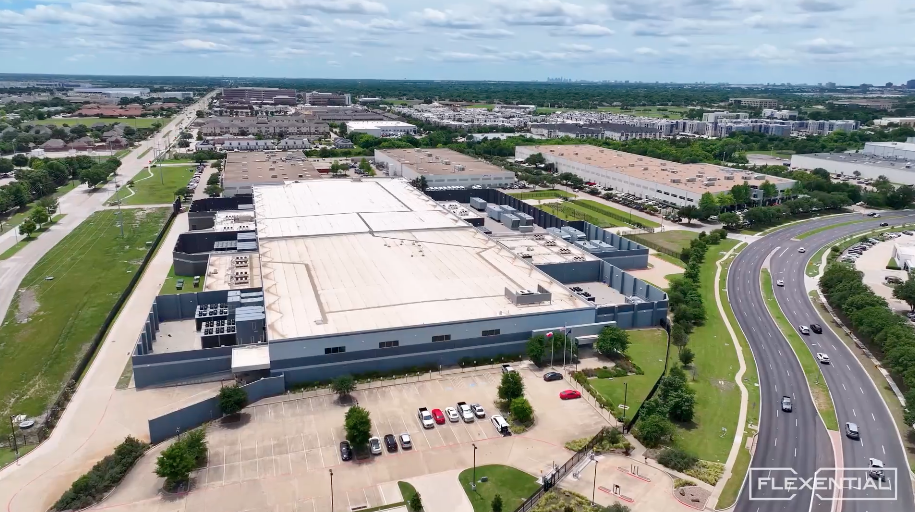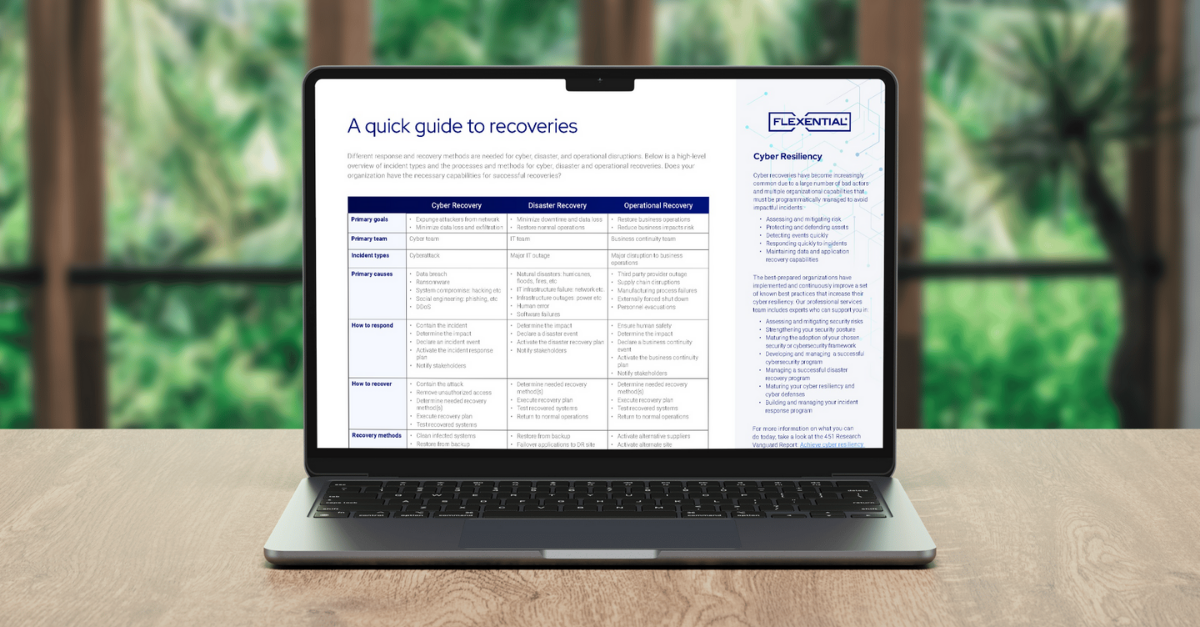Balancing data resilience strategy with data recovery
Effective data protection requires a balanced approach between data resiliency, data management, and recovery. Strategies like redundancy, replication, and backups, along with thorough testing and encryption, play a crucial role in maintaining data availability and security.

Robust data backup is a critical component of data resiliency and business continuity planning. Strong backup and recovery measures not only ensure data availability during disruptions but are also essential for meeting regulatory compliance requirements.
According to a Forbes report, recent research indicates that the average cost of downtime has reached $9,000 per minute for large organizations, translating to $540,000 per hour. In higher-risk industries like finance and healthcare, downtime costs can exceed $5 million per hour in certain scenarios.
Recent data underscores the significant challenges businesses face in the aftermath of disasters. According to the Federal Emergency Management Agency (FEMA), approximately 25% of businesses do not reopen following a disaster. Furthermore, nearly 43% of small businesses affected by a disaster never reopen, and an additional 29% fail within two years.
As businesses become more digital—and the data sphere becomes more vulnerable to threats from both man-made and natural disasters—organizations of all sizes are rethinking their strategies for data resiliency and data recovery.
So, what’s the difference between resiliency and data recovery? And do you need both?
In simple terms, data resiliency is proactive, and data recovery is reactive. That said, it should be noted that a solid resilience strategy includes traditional disaster recovery, backup, and security components. Data resilience strategies are essential for enhancing organizational security against cyberattacks and ensuring data availability. Read on for a short primer on data resiliency and data recovery—and how to balance the two.
Understanding data resiliency
Data resiliency refers to an organization’s ability to withstand and recover from data-related disruptions or failures. It involves implementing measures that ensure data availability, integrity, and security. Data resiliency is critical for minimizing the risk of losing important data and maintaining business continuity. It requires a proactive approach to protect an organization’s critical data assets.
In essence, data resiliency is about creating a robust framework that can handle unexpected disruptions without compromising the availability and integrity of critical data. This involves not only having redundant systems and backups in place but also ensuring that these systems are regularly tested and updated to handle new threats. By focusing on data resiliency, organizations can ensure that their data remains accessible and secure, even in the face of unforeseen challenges.
Data resiliency vs. related concepts
Data resiliency is often confused with related concepts such as data availability and disaster recovery. While these concepts are related, they are not the same.
Data resiliency vs. data availability
Data availability refers to an organization's ability to access and use its data when needed. It ensures that data is readily accessible to authorized users and systems at all times. Data resiliency, on the other hand, refers to an organization's ability to withstand and recover from data-related disruptions or failures. While data availability is an important aspect of data resiliency, it is not the same thing.
Data resiliency encompasses a broader scope, including measures to prevent data loss, ensure data integrity, and recover data quickly in the event of a disruption. In other words, data availability is a component of data resiliency, but data resiliency goes beyond just making data accessible; it ensures that data remains intact and recoverable under adverse conditions.
Benefits of data resiliency
Implementing a data resiliency strategy can provide numerous benefits to an organization, including:
- Improved data availability and integrity: Ensuring that data is always accessible and accurate, even during disruptions.
- Reduced risk of data loss and corruption: Minimizing the chances of losing critical data due to failures or attacks.
- Enhanced data security and data protection: Safeguarding sensitive data from unauthorized access and breaches.
- Improved business continuity and disaster recovery: Enabling the organization to maintain operations and recover quickly from disruptions.
- Increased customer satisfaction and trust: Building confidence among customers that their data is secure and always available.
- Reduced costs associated with data loss and recovery: Lowering the financial impact of data-related incidents through proactive measures.
By implementing a data resiliency strategy, organizations can ensure that their data is available, secure, and protected, even in the event of a disaster or major disruption. This can help improve business continuity, reduce costs, and increase customer satisfaction and trust. A robust data resiliency strategy protects the organization’s data, reputation, and operational efficiency.
Data resiliency strategy
Resiliency is your infrastructure’s ability to avoid unexpected disruptions. A quality resilience strategy has the following characteristics:
- A strong resilience strategy substantially reduces your systems’ vulnerability, minimizes downtime and impact, and reduces critical data loss. It is crucial to ensure data resiliency by incorporating data redundancy and backups, as they play a vital role in recovery and maintaining system integrity.
- Resiliency is often attained through the use of redundant systems or facilities. When one component fails or experiences disruption, the redundant element takes over seamlessly and continues to support your organization’s user base. Protecting an organization's data against potential threats is essential, and implementing best practices for safeguarding critical data assets is a key part of this strategy.
- Ideally, users of a resilient system never even know that a disruption has occurred.
- A resiliency plan enables you to execute planned activities like upgrades, migration, and day-to-day maintenance with no downtime.
Disaster recovery from natural disasters
A disaster recovery (DR) plan contains detailed instructions for responding to unplanned disruptions, including human error, malicious attacks, natural disasters, and more. At a minimum, it includes:
- Preventative measures that reduce the risk of a disaster taking place
- Discovery measures designed to identify disruptive events quickly
- Corrective measures to restore lost data and allow IT processes to return to normal
While traditional IT disaster recovery involves duplicating data through tape backup and imaging or replicating their production environment to a secondary DR location, backup solutions alone are inadequate for most relatively modern companies. A solid DR plan must include:
- Instructions for keeping critical applications and services online during a power outage and/or loss of connectivity
- A communications plan for staff in case cell service and networks go down
- A physical backup location where employees can work if offices are damaged or destroyed
- Steps to ensure constant adherence to security and compliance obligations
A disaster recovery plan is more focused than a business continuity plan and does not necessarily cover all contingencies for business processes, assets, human resources, and business partners. Data resilience is crucial for maintaining operational continuity amidst various challenges, ensuring that organizations can continue to function effectively.
Get a roadmap for implementing best practices, expertly designed by our industry professionals to safeguard your business's critical infrastructure and ensure uninterrupted and secure operations, even during disasters. Download the Disaster Recovery Handbook
The bottom line
It’s critical for data-intensive organizations to create – and test – both a resilience strategy and an IT disaster recovery plan. A resilience plan is no substitute for an IT disaster recovery plan, and an IT disaster recovery plan is no substitute for a business continuity plan. Implementing data resilience strategies is essential to enhance organizational security and ensure data availability.
Development of both a resilience strategy plan and a disaster recovery plan starts with an assessment of your data center’s vulnerability, but you don’t have to go it alone. A disaster recovery service can augment internal teams when the worst happens. Schedule a consultation to learn more.







